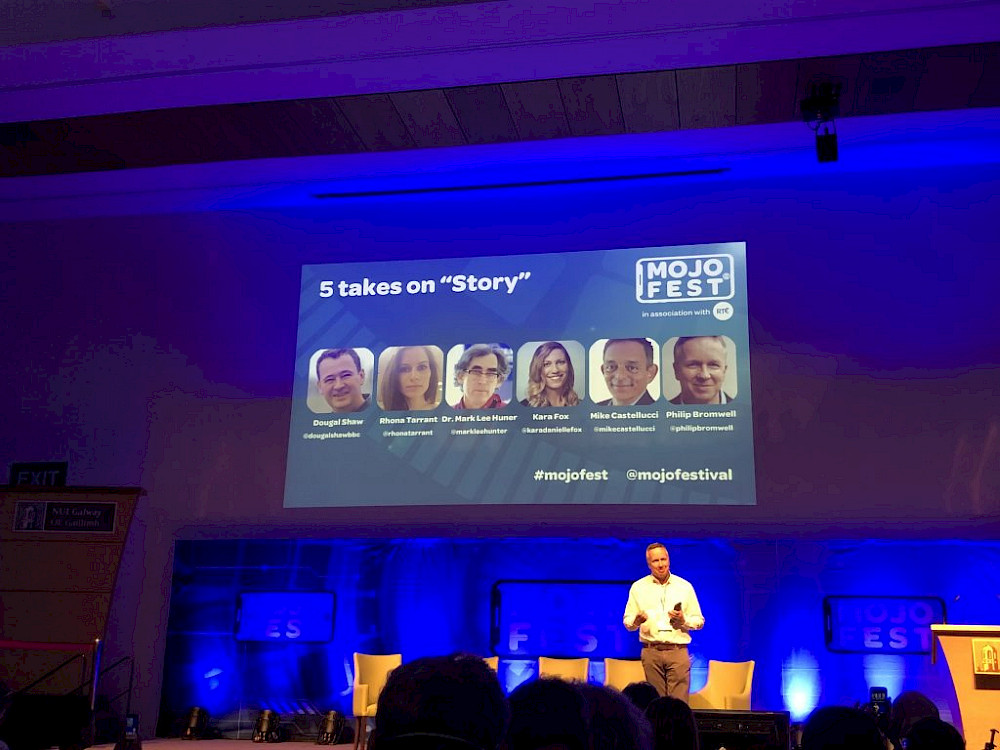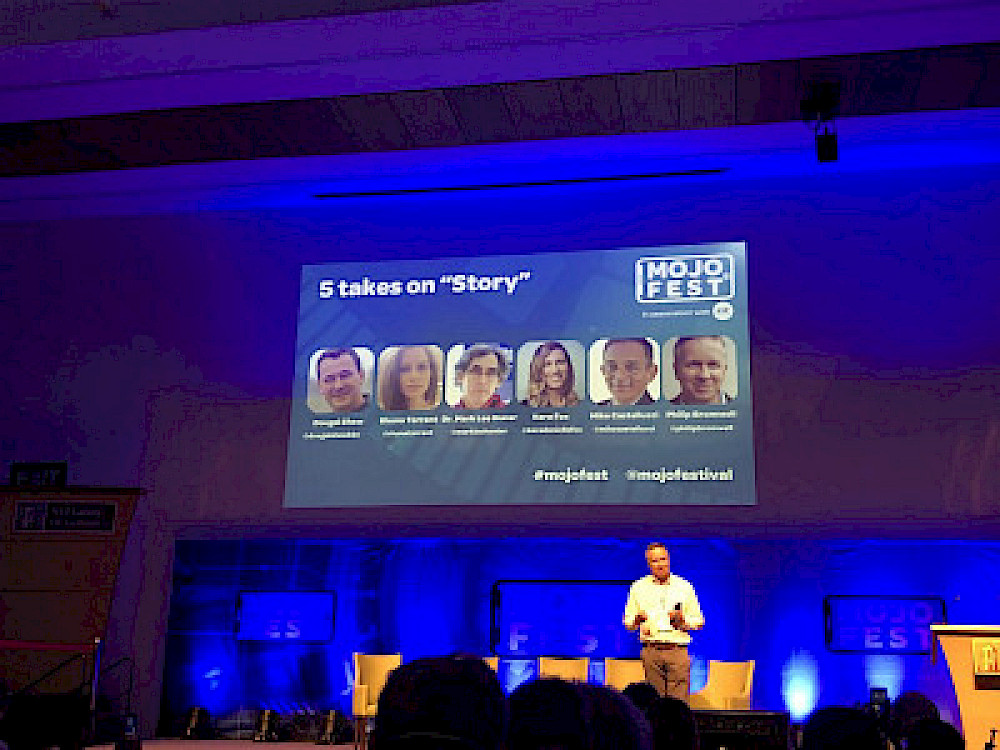MoJo – it stands for mobile journalism, meaning journalism recorded, edited and filed from a mobile device – is a growing trend in newsrooms around the world. MoJo is used mostly to make videos for social media and the web, but as the cameras and processing power of mobile phones improve, MoJo content is increasingly being used for broadcast media as well.

MoJo has its own annual event – MoJoFest – which is held annually in Ireland, organised by former RTÉ specialist Glen Mulcahy. From 2015-2017, the event (then called MoJoCon) was run by RTÉ, and in 2018 and this year, Glen Mulcahy ran it independently. The 2019 event was held at the NUIG campus in Galway from June 6-8. After it finished, Mulcahy announced he would not be organising an event next year.
Whatever about the future of MoJoFest, the future of MoJo itself seems secure. The use of mobile devices to create news content is a growing trend, especially in Africa, the Middle East and in Scandinavian countries. The advantages are obvious: MoJo is cheaper (in terms of both money and person power) than traditional video/TV recording, and there is a logic to making news on a phone as it will be viewed on a phone – the “made by a phone for a phone” argument.
There are other less obvious advantages: interviewees are less intimidated when recorded on a familiar device like a phone, and journalists are less conspicuous when newsgathering with small devices. Of course, one of the disadvantages is that, with a traditional recording crew, there would usually be three people (journalist, camera person and sound person) – now, shooting, audio, framing shots, recording sequences, lighting, editing and uploading are all the responsibility of one person.
In Ireland, the uptake of MoJo has been slow. Many newsrooms still send a reporter and a videographer to events, or have the reporter file raw footage to be edited by a professional video editor back at the office. Doing everything on the phone is still quite rare. However, it is growing fast elsewhere, and it a MoJo module is a core element of DCU’s journalism undergrad and postgrad courses.
One exception is the small MoJo team at RTÉ run by Philip Bromwell. And the way in which this team works could be a model for other newsrooms. Team Bromwell source off-diary stories, usually softer, feature style accounts, the kind of “…and finally” quirky report that is the last item in TV news bulletins. These are filmed, edited and filed on iPhones using the FilmicPro app (filming) and the LumaTouch app (editing).
Philip’s team make several versions of the same film: square format with subtitles for social media and landscape format (16:9 aspect ratio) for broadcast and for publication online. This repurposing of original content is a great way to get content to different audiences on different platforms.
Philip showed some of his team’s work at MoJoFest: a social media video about a “wind phone” installed in the Dublin Mountains by a guerrilla art group, and a film about a young Syrian refugee to Ireland who learned to play the piano by watching YouTube videos.

MoJo dispatches: hardware
The DJI Ozmo Pocket camera is a tiny, palm-of-the-hand sized video camera with a built-in mechanical gimbal. “This camera is the future,” said action video specialist Philip Bloom.
Also, 360 video is making a comeback, with the Insta360 camera proving popular with delegates. Live-streaming in 360 is also becoming more prevelant. Journalists haven’t quite worked out how to use 360 for news, and it has faded a little from the news agenda; to judge from MoJoFest, it is about to make a comeback.
MoJo dispatches: software
Steve Flood, the head of Adobe Creative Studio, was on hand to guide participants through the new(ish) Adobe Rush app. Rush allows you to record, edit and file from inside the app. It is very impressive, and is gaining users at the rate of 30,000 a day, with 6.5m users since its launch in October last year.
Rush is adding a new feature whereby, when reformatting video footage from horizontal to vertical, the app will use AI to detect how the crop the footage.
MoJo dispatches: social media
Firms who create content and manage social media accounts for corporations are a growing source of employment for former journalists and MoJo-ers. Some trends, according to Denise Whitmore of The Social Media Department (www.thesocialmediadepartment.ie): current social strategies are less about the quantity of posts. Formerly, there was an emphasis on regular and frequent posts X times per day; now, the focus is on more sporadic posts of higher quality. The search is on more emotionally engaging content, and there is a move away from social media influencers with huge followings and towards “nano-influencers” with fewer than 1,000 followers.
Sue Llewellyn, one of the more thoughtful analysists of the social media scene, notes the trend towards closed, private groups and the importance of visuals over text. “Treat each platform like a different country, with its own language, culture and norms,” she said. Consultant Matt Navarra noted trends towards increased regulation of social media, the rise of “stories” on Instagram and FB and the rise of ephemeral content, a move towards group chats in private grouos, and the increased use of AI, chat boys and AR.
MoJo dispatches: voices
Dima Khatib, managing director of AJ+ (www.ajplus.net) the online news channel follows a simple strategy – they cover breaking news, then say two days later they cover the reaction to the event, and then provide a wider context “explainer” video. These “explainers” can be reused whenever the issue surfaces again. As funding is not an issue, they produce content to TV standards, and hire people to make their films through Storyhunter (www.storyhunter.com).
Kristna De, social media consultant: LinkedIn is the sleeping giant of social media. LinkedIn Live (live streaming function currently being tested) will be influential.
Loretta Ní Ghabháin, founder of Lord Media (www.lorgmedia.ie): Live-streaming to social media can build audiences. You can get into the midst of great events and create FOMO among viewers. Be aware that you need a team to do this, you will make mistakes, and have some pre-recorded content to cut to during broadcasts.




